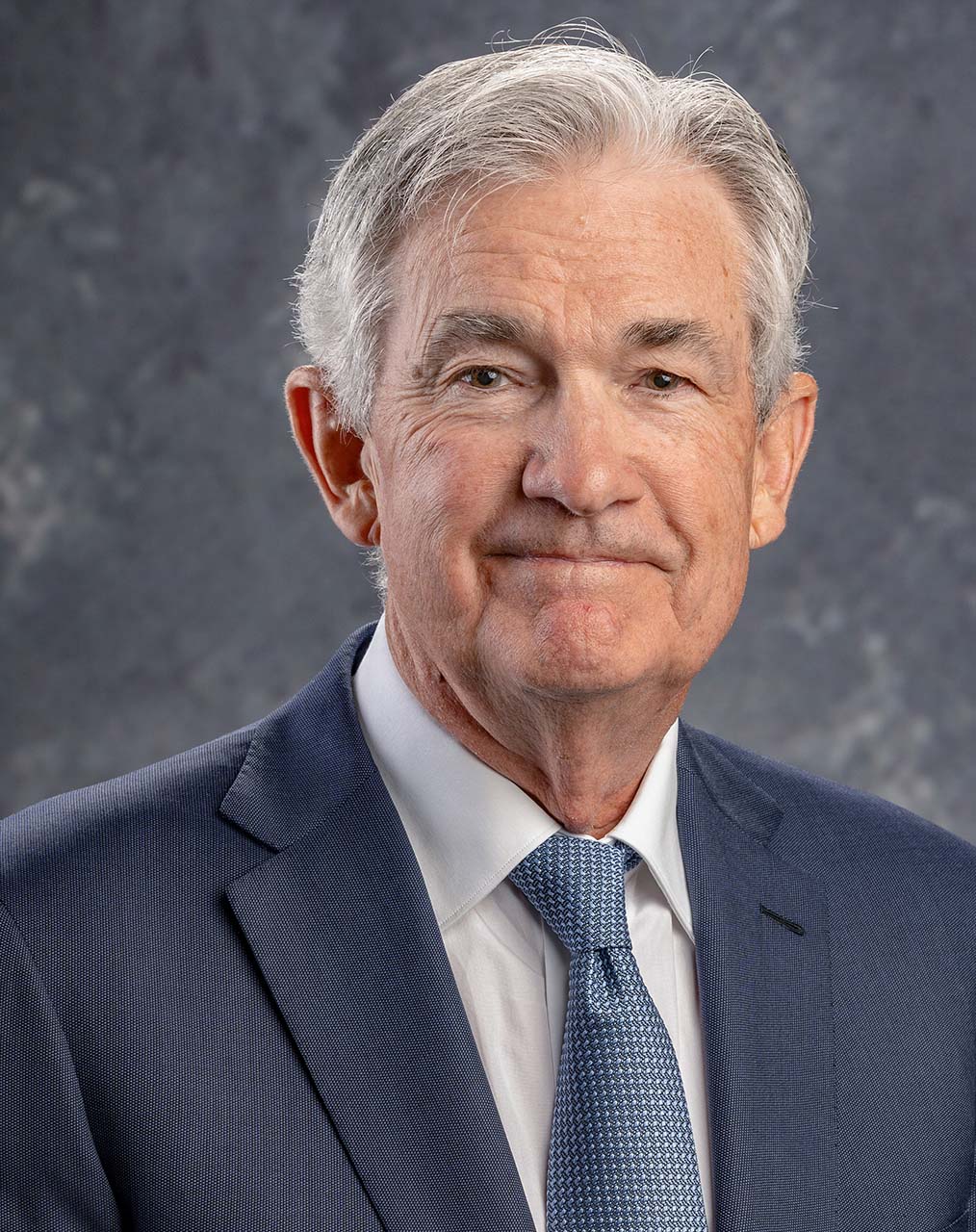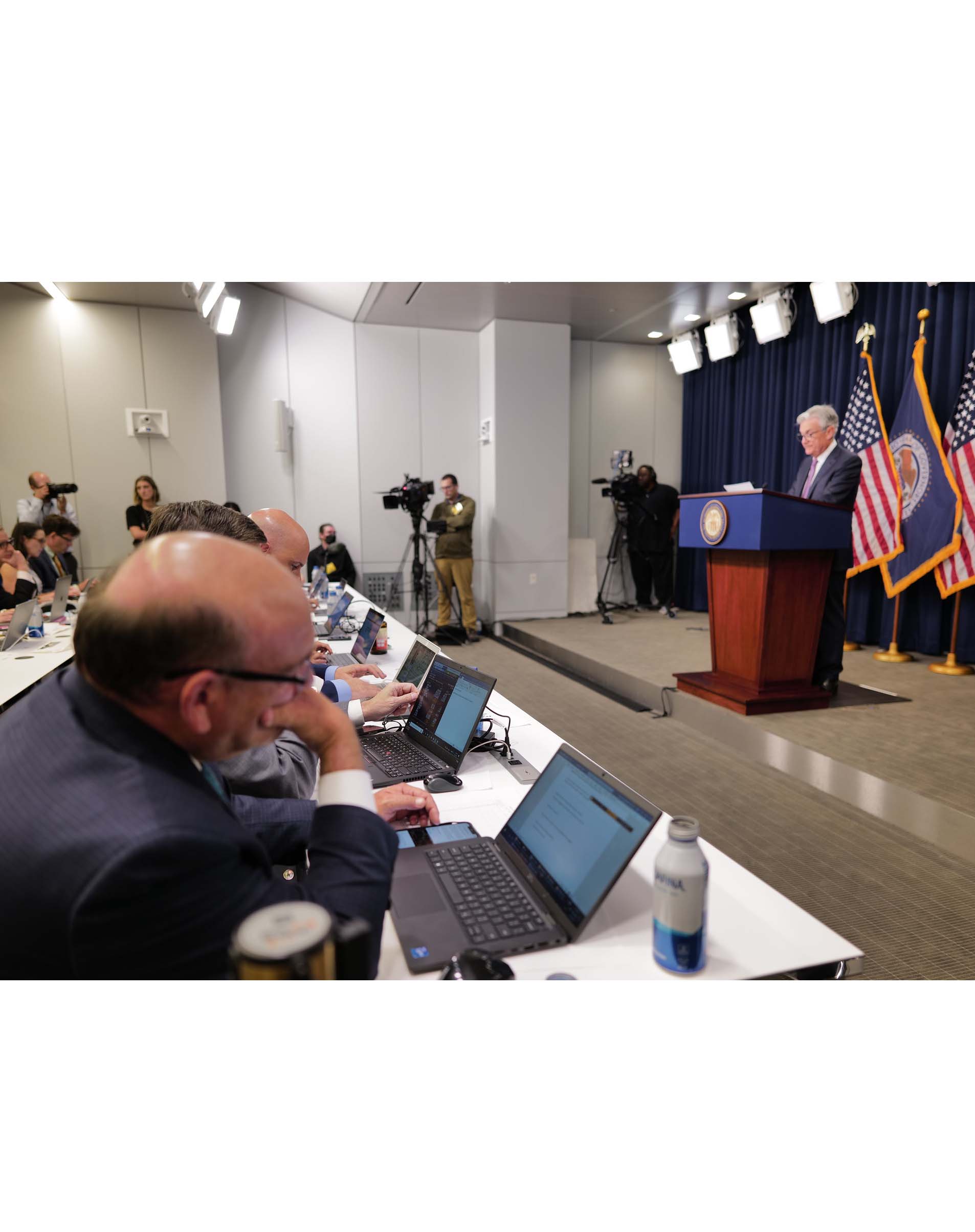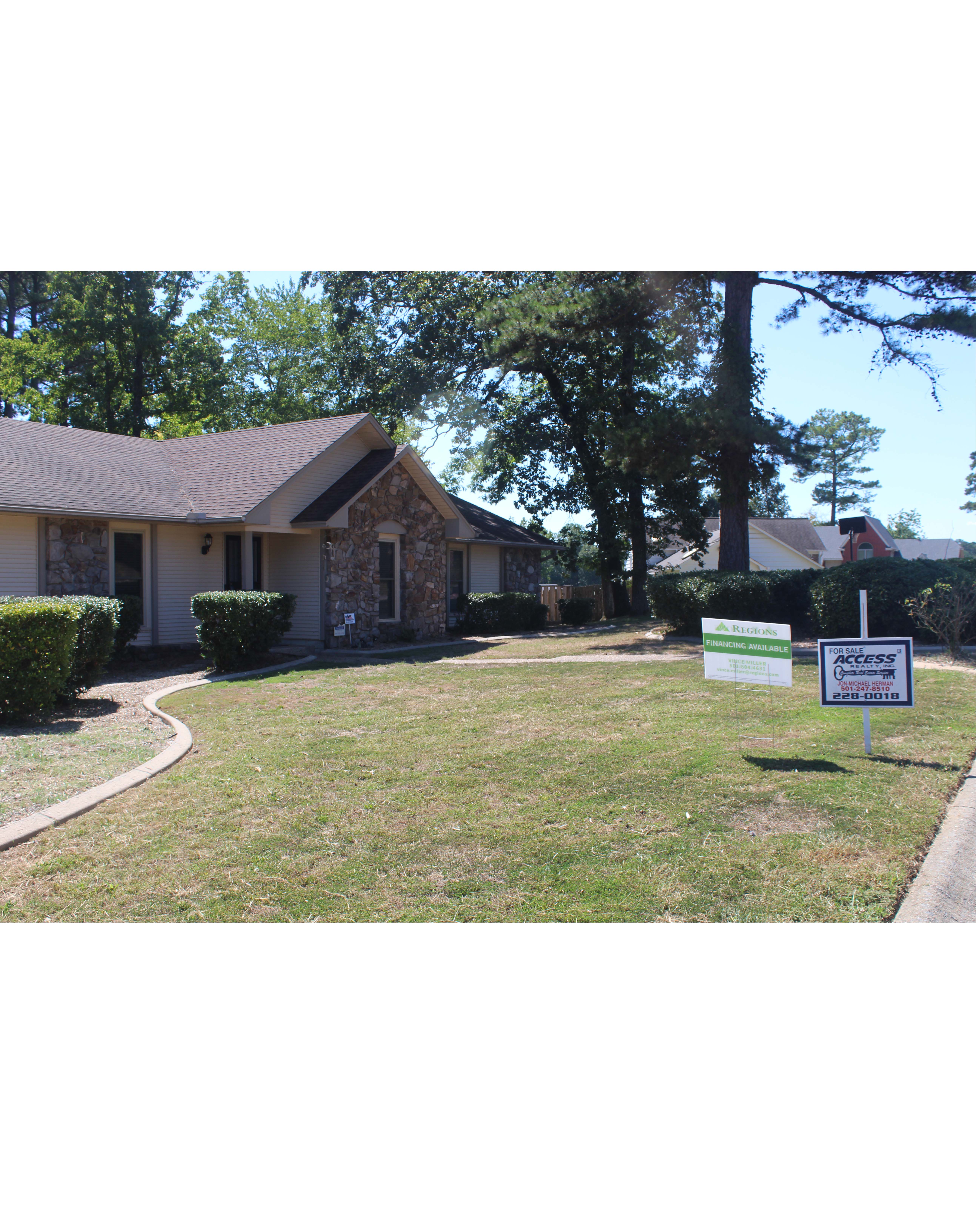Fed Gambit. Central Bank Rate Hikes Cool U.S. Housing Market But Inflation Still Sky High
September 26 - October 2, 2022
By The Daily Record Staff
In its efforts to keep inflation under control, the Federal Reserve’s Open Market Committee (FOMC) raised the target range for the federal funds rate for the fifth time in 2022 to 3% to 3.25%.
Following the quarterly meeting of influential the 12-person committee that sets the nation’s monetary policy, Federal Reserve Chair Jerome Powell said more interest rate hikes could be ahead as the nation’s inflation rate remains well above the FOMC’s 2% annual target.
On Sept. 13, the U.S. Bureau of Labor Statistics (BLS) reported that the Consumer Price Index for over the last 12 months has increased by 8.3%, slightly below the 8.5% acceleration in July. In noting the impact of inflation on the broader economy, Powell said the FOMC is keeping watchful eye on possible risks.
“In assessing the appropriate stance of monetary policy, the Committee will continue to monitor the implications of incoming information for the economic outlook. The Committee would be prepared to adjust the stance of monetary policy as appropriate if risks emerge that could impede the attainment of the Committee’s goals,” Powell said in a statement. “The Committee’s assessments will take into account a wide range of information, including readings on public health, labor market conditions, inflation pressures and inflation expectations, and financial and international developments.”
Following the Fed’s two-day policy meeting that saw a third consecutive increase of 0.75 percentage points by the nation’s central bank, the aggressive monetary stance had some concerned about a possible downturn
A new survey from Grant Thornton LLP, one of America’s largest audit, tax and advisory firms, reveals a sharp and continual decline in optimism for chief financial officers (CFOs) across the country. Many of the same factors contributing to pessimism in the first quarter of 2022 are still bothering CFOs — but now, finance leaders are even more worried. In fact, 72% of the 249 CFOs surveyed expect hikes in interest rates will lead to a recession.
“At the beginning of 2021, there was this sense that COVID-19 was ending and growth was going to ramp up,” said Sean Denham, Grant Thornton’s national audit growth leader. “Businesses were far more confident about the economy and were loosening their belts a little. Now, with most expecting a recession, they’ve tightened their belts considerably."
The strongest signs that the nation’s housing market could be turning toward a recession are highlighted in several highly watched industry reports that show home prices are declining for the first time in nearly three years.
On Sept. 19, Seattle-based Zillow Inc. reported that home values slipped for the second consecutive month as mortgage costs continue to sideline buyers. The monthly real estate market report also notes that low-cost markets remain competitive while prices drop the fastest in both the most expensive markets and those that witnessed the strongest appreciation during the pandemic.
In addition to affordability challenges, recent volatility in mortgage rates is making it difficult for many borrowers to qualify for a loan or even plan for their purchase.
“Substantial day-to-day and week-to-week rate movements mean that many potential buyers are able to qualify for a loan one week, but not the next, or vice versa,” said Skylar Olsen, chief economist at the West Coast real estate data analytics giant. “Even buyers able to afford a house at current rates could feel frozen, waiting for mortgage rates to fall dramatically again, like they did from the end of June to mid-July, when rates dropped 50 basis points in just two weeks.”
As the share of median household income needed to pay monthly mortgage costs now stand beyond the 30% level considered to be a financial burden, uncertainty itself could be holding up a large population of buyers who could otherwise still afford to move forward with a loan. It’s likely that this problem will continue until markets stabilize and return to some semblance of normalcy, Olsen said.
The U.S. typical home value fell 0.3% from July to August and now stands at $356,054, as measured by the raw2 Zillow Home Value Index. That’s the largest monthly decline since 2011 and follows a 0.1% decrease in July. Appreciation has receded since peaking in April, but typical home values are still up 14.1% from a year ago and 43.8% since August 2019, before the pandemic.
Typical mortgage payments show an even starker picture of the astronomical growth of expenses for new homeowners over the past three years. The historic rise in home prices over the pandemic combined with this year’s spiking mortgage rates have pushed the monthly mortgage payment on a newly-purchased typical home, including insurance and taxes, from $897 in August 2019 to $1,643 — an 83% increase.
Earlier on Sept. 7, Black Knight Inc.’s Data & Analytics division released its latest Mortgage Monitor Report indicating a deceleration in home price growth in recent months after the Federal Reserve’s Open Market Committee raised the federal funds target rate for the fourth time in 2022 from the range of 2.25% to 2.5%.
Through its Data & Analytics division, publicly traded Black Knight manages the nation’s leading repository of loan-level residential mortgage data and performance information covering the majority of the overall market, including tens of millions of loans across the spectrum of credit products and more than 160 million historical records.
The new July data, compiled monthly by the Jacksonville, Fla.-based real estate data analysis firm, represents the most recent data from the Black Knight Home Price Index. Ben Graboske, president of Black Knight Data & Analytics, said the month-to-month decline represents the first such contraction in nearly three years.
“After 31 consecutive months of growth, home prices pulled back by 0.77% in July,” said Graboske. “Annual home price appreciation still came in at over 14%, but in a market characterized by as much volatility and rapid change as today’s, such backward-looking metrics can be misleading as they can mask more current, pressing realities. Case in point — this cooling has been indicated in our home price data for several months now, and at an increasing pace.”
In January, prices rose at 28 times their normal monthly rate before slowing to five times the average in February as interest rates began to tick up, according to Graboske.
“Even May was still about two times normal, before June growth came in 70% below the long-run average. And all the while, annual appreciation continued to appear historically strong, showing double-digit growth month after month,” said the Black Knight executive. “Without timely, granular data, market-moving trends don’t become apparent until they’re right in front of you — like a sudden shift to the largest single-month decline in home prices in more than a decade.”
The July report looks again at the inventory side of the housing supply/demand equation. Falling housing demand continued to allow inventory levels to build for the fifth month in a row, with July marking the third consecutive record-breaking increase.
Despite a 128,000 rise in active listings, inventories remain 622,000 (45%) below 2017-2019 levels. Black Knight Collateral Analytics data shows 3.1 months’ worth of inventory as of the end of July, up from 1.7 months at the beginning of the year. If sales continue to fall at the current rate, they have the past four months and listings continue to build at their current pace, inventory will cross the six-month threshold by December — typically the point at which the landscape shifts from a seller’s to a buyer’s market.
Meanwhile, the Fannie Mae Home Price Sentiment Index (HPSI) also decreased 0.8 points in August to 62.0, its sixth consecutive monthly decline, as high home prices and elevated mortgage rates continue to weigh on consumer’s home-selling sentiment. Despite the relatively small aggregate change, the HPSI experienced significant volatility among four of its six components, including those measuring consumer perceptions of homebuying and home-selling conditions and expectations regarding the future direction of home prices and mortgage rates.
Month over month, consumers reported that home-selling conditions have worsened — although that component remains strongly positive on net. Consumers also reported that homebuying conditions have improved, but 73% continue to report that it’s a “bad time to buy.” For the first time since the start of the pandemic, consumers are neutral, on net, about the future path of home prices, with an increasing share this month reporting that prices will decline. Meanwhile, a greater share reported the expectation that mortgage rates will decline, even though a majority continue to believe that mortgage rates will go up over the next 12 months. Year over year, the full index is down 13.7 points.
“The share of consumers expecting home prices to go down over the next year increased substantially in August. Accompanying this, HPSI respondents reported a significant decrease in home-selling sentiment,” said Doug Duncan, Fannie Mae’s chief economist. “We also observed a large decline in consumers reporting high home prices as the primary reason for it being a good time to sell a home, suggesting that expectations of slowing or declining home prices have begun to negatively affect selling sentiment.”
Duncan, however, said lower home prices would obviously be welcome news for potential first-time homebuyers, who are likely feeling the combined affordability constraints of the high home price and high mortgage rate environment. He said the survey’s “ease of getting a mortgage” component dropped to an all-time low among this typically younger demographic.
With home prices expected to moderate over the forecast horizon and economic uncertainty heightened, both homebuyers and home-sellers may be incentivized to remain on the sidelines — homebuyers anticipating home price declines and potential home-sellers not keen to give up their lower, fixed mortgage rate — contributing to a further cooling in home sales through the end of the year,” said Duncan.
Foreclosure returning to pre-pandemic levels, Arkansas defaults up 50%
Meanwhile, another key metric of the housing market shows there were a total of 34,501 U.S. properties with foreclosure filings — up 14% from a month ago and up 118% from a year ago. Lenders started the foreclosure process on 23,952 U.S. properties in August 2022, up 12% from last month and up 187%from a year ago, according to the ATTOM U.S. Foreclosure Market Report.
The monthly report is produced by ATTOM Data Solutions, an Irvine, Calif.-based real estate data analytics firm. The highly watched report is compiled from default notices, scheduled auctions or bank repossessions across the U.S.
“Two years after the onset of the COVID-19 pandemic, and after massive government intervention and mortgage industry efforts to prevent defaults, foreclosure starts have almost returned to 2019 levels,” said Rick Sharga, executive vice president of market intelligence at ATTOM. “August foreclosure starts were at 86% of the number of foreclosure starts in August 2019, but it’s important to remember that even then, foreclosure activity was relatively low compared to historical averages.”
States that had at least 100 foreclosure starts in August 2022 and saw the greatest monthly increases in foreclosure starts included: Oklahoma (80%); Tennessee (74%); Virginia (64%); Arkansas (53%) and Washington (50%).
In taking a more granular look, those counties that had the greatest number of foreclosure starts in August 2022 included: Cook County, Ill. (798 foreclosure starts); Los Angeles County, Calif. (740 foreclosure starts); Harris County, Texas (465 foreclosure starts); Suffolk County, N.Y. (297 foreclosure starts) and Riverside County, Calif. (280 foreclosure starts).
Lenders repossessed 3,938 U.S. properties through completed real-estate owned (REOs) foreclosures in August 2022, up 28% from last month and up 59% from last year. Those states that had the greatest number of REOs in August 2022, included: Illinois (493 REOs); New York (337 REOs); Michigan (326 REOs); Pennsylvania (260 REOs) and California (189 REOs).
“Repossessions are likely to continue running below pre-pandemic levels for several reasons, most importantly that over 90% of borrowers in foreclosure have positive equity in their homes and would benefit from selling these properties at a profit rather than risk losing everything to a foreclosure auction or lender repossession,” Sharga noted.
Photo Captions:
1. Federal Reserve Chair Jerome Powell
2. Top Right: During the Federal Reserve’s Open Market Committee (FOMC) press conferenceon Sept. 22, Federal Reserve decided to raise the target range for the federal funds rate to 3% to 3.25% and said he anticipates ongoing interest rate hikes in the near-term to fight against inflation.
3. Bottom right: After the FOMC raised the federal target rate that banks pay to each other, most of the nation’s top banks, including JPMorgan Chase, Bank of America, Citigroup and Wells Fargo, raised their prime lending rates to 6.25%. Banks use the prime rate to determine interest rates on mortgages, credit cards, car loans, and other bank financing.





